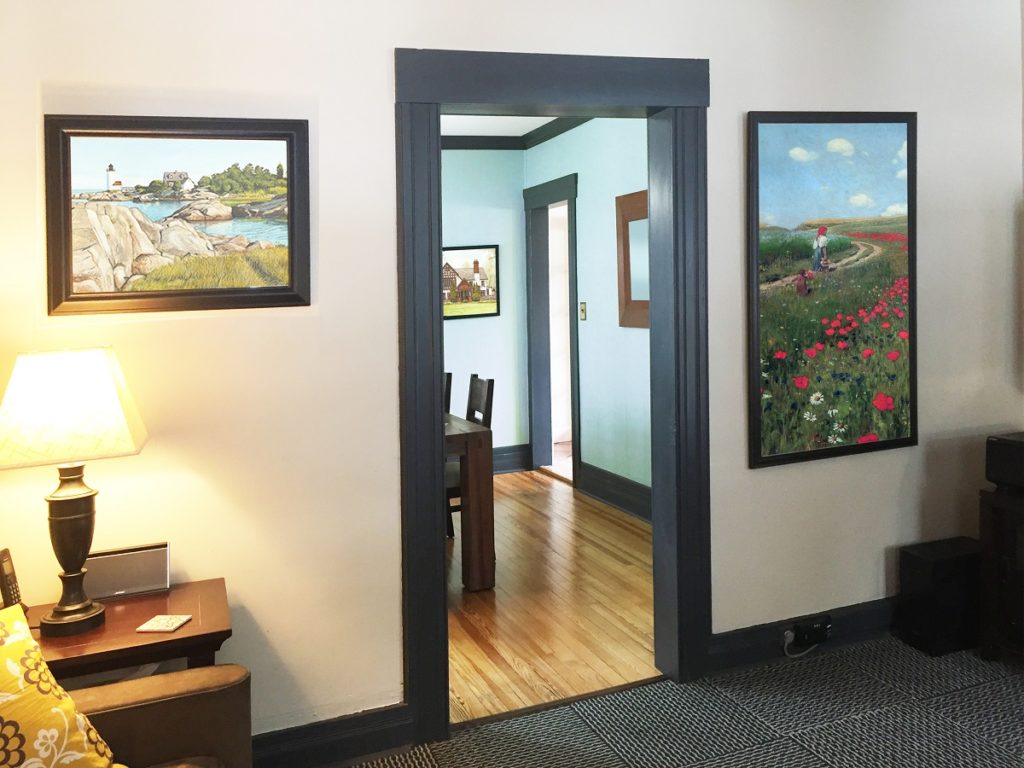
Shades of white are the standard choice for trim within a home but using a darker trim can be eye-opening! White is lovely and dependable, sure, but charcoal gray or other darker trim is modern, edgy, and far more intriguing. Here are some circumstances in which darker trim could make your rooms standout.
Let us begin by establishing where the trim is. Traditionally speaking, it is the baseboards and the molding outlining the windows and doors. The doors are a trim paint. Although, doors can remain as stained wood or match the lighter color wall. Doors are usually treated the same way as the moldings, but it is also a place where you can try a different solution.
Light and neutral colors are popular for home interiors. Perhaps your home has a lot of white on white. It is a peaceful and quiet look, but what if you want to add in some intensity using existing features? A darker color of trim can add contrast in an impactful manner. Darker moldings also look great with lighter brighter walls, so if you favor lighter walls, the darker trim can be a great choice!
Molding is a unique place to add accent color to your room. There is not a lot of it commonly speaking. It is as if you have outlined the room with a ribbon on color. It enables you to add color to your space, without it being a distraction or energy killer.
Not all your moldings need to be painted a darker color to achieve this. Black doors, for instance, look striking with light to medium baseboards and encompassing door molding. You could paint the trim darker in one room or the whole house. Don’t be ruled by your color decisions, test, make changes and enjoy expanding your style.
Many older homes have darkened stained wood trim. If you love your historic home, painting the original stained wood is not ideal! Deciding whether or not you leave your dark trim intact depends on its current condition. If your home is full of well-made, vintage design details, you probably want to stick with it. If you are inundated by 1970s orange-toned wood-paneling, however, you’ll likely be less attached. There are circumstances when it is worth it to keep the molding surrounding the windows and doors and replace the wall treatment so the molding can demand more of a statement.
See the work I’ve done as an exterior paint color consultant.
Like choosing a white for your trim, selecting a slate blue or different color is not as simple as it looks. Blacks and greys have undertones just like whites and creams. Your elected color will have an intensity to it. A softer or dustier black is very different than a hearty, pitch black.
Using muted tones is good to follow when trying to avoid overwhelming your area. If you’re only painting a door or a little space of trim, you can go deeper. Recognize the other colors in the room. Match the undertones for genuine results.
Looking for some help to create a color scheme? Check out our Color911 app! You will discover some exceptional deep, dark shades, and plenty of inspiration. Discover your palettes by adding your wall color to your palette, then play with creating colors that you would consider for your moldings. You will save time and money by coordinating your chosen colors with your walls and furnishings before deciding to purchase or begin to paint.
Lastly, as you can see in the photo, darker moldings can be a striking look. You can use colors this way whether your home is contemporary, traditional or all the way back to Victorian. This is a new way for you to use color, and I hope I have opened your eyes to fresh possibilities. Stay inspired!